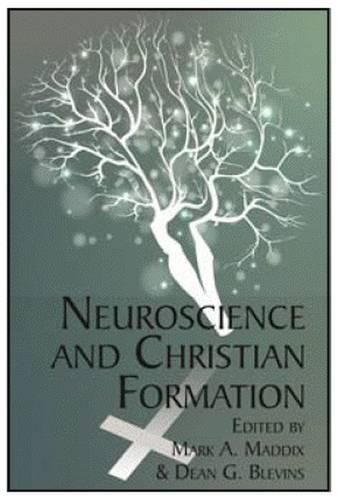Readings Newsletter
Become a Readings Member to make your shopping experience even easier.
Sign in or sign up for free!
You’re not far away from qualifying for FREE standard shipping within Australia
You’ve qualified for FREE standard shipping within Australia
The cart is loading…






This title is printed to order. This book may have been self-published. If so, we cannot guarantee the quality of the content. In the main most books will have gone through the editing process however some may not. We therefore suggest that you be aware of this before ordering this book. If in doubt check either the author or publisher’s details as we are unable to accept any returns unless they are faulty. Please contact us if you have any questions.
Why a text on neuroscience and Christian formation? Simply put, we need one that represents the range of possible intersections for today and into the future. In recent years, neuroscience’s various fields of study have influenced our understanding of theperson, memory, learning, development, communal interaction, and the practice of education.
The book serves as an introductory textbook for Christian education/formation professors to use in Christian education or Christian formation courses at the College or Seminary level. The book is designed to provide an overview of how current research in neuroscience is impacting how we view Christian education and formation with particular attention given to faith formation, teaching, development, and worship The first four chapters discuss how neuroscience broadly influences Christian education and formation. Chapters five through eight explore how neuroscience informs specific formational practices, from personal meditation, to intercultural encounter, to congregational formation and worship. The last four chapters explore various aspects of neuroscience along developmental lines, The book also moves from conceptual overviews to more empirical studies late in the text. Each chapter of this book canalso be read and discussed individually. Each author has provided both discussion topics, suggestions for future reading within neuroscience, and discussion questions at the end of the chapter.
$9.00 standard shipping within Australia
FREE standard shipping within Australia for orders over $100.00
Express & International shipping calculated at checkout
This title is printed to order. This book may have been self-published. If so, we cannot guarantee the quality of the content. In the main most books will have gone through the editing process however some may not. We therefore suggest that you be aware of this before ordering this book. If in doubt check either the author or publisher’s details as we are unable to accept any returns unless they are faulty. Please contact us if you have any questions.
Why a text on neuroscience and Christian formation? Simply put, we need one that represents the range of possible intersections for today and into the future. In recent years, neuroscience’s various fields of study have influenced our understanding of theperson, memory, learning, development, communal interaction, and the practice of education.
The book serves as an introductory textbook for Christian education/formation professors to use in Christian education or Christian formation courses at the College or Seminary level. The book is designed to provide an overview of how current research in neuroscience is impacting how we view Christian education and formation with particular attention given to faith formation, teaching, development, and worship The first four chapters discuss how neuroscience broadly influences Christian education and formation. Chapters five through eight explore how neuroscience informs specific formational practices, from personal meditation, to intercultural encounter, to congregational formation and worship. The last four chapters explore various aspects of neuroscience along developmental lines, The book also moves from conceptual overviews to more empirical studies late in the text. Each chapter of this book canalso be read and discussed individually. Each author has provided both discussion topics, suggestions for future reading within neuroscience, and discussion questions at the end of the chapter.